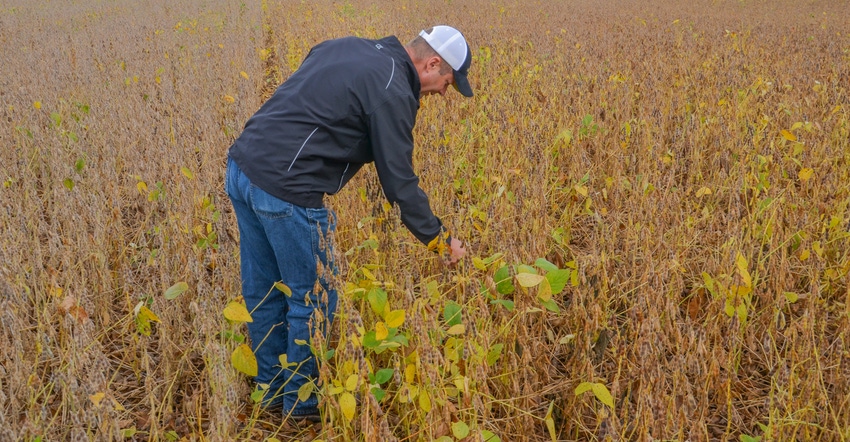
There are facts about the Soybean Watch ’19 field. Then there are observations. However, Steve Gauck notes it’s important to understand that observations aren’t the same as having scientific data to back up your conclusions.
“We can learn from what we saw, and we can come up with theories,” says Gauck, Beck’s sales agronomist, Greensburg, Ind. “However, it’s not the same as having conclusions based on replicated trials. When we look ahead to 2020, we need to be careful not to put too much weight on observations which we can’t prove.”
Beck’s sponsors Soybean Watch ’19.
Here are the facts about the Soybean Watch ’19 field:
Planting. The field was no-tilled into cornstalks on June 12 with a John Deere 750 no-till drill.
Weather. Rains began June 15 and continued for 10 straight days, with total rainfall of approximately 5 inches. Temperatures dropped into the 40s during one morning.
Stand counts. Random stand counts were made on two different days, using a hula-hoop. Variety A averaged 107,000 plants per acre, and Variety B averaged 124,000 plants per acre.
Genetics. The varieties were from two different companies. Both varieties were mid-Group 3, although Variety B was a few days later in maturity.
Seed treatments. Variety A was treated only with Ilevo to combat sudden death syndrome. Variety B was coated with a complete seed treatment plus Ilevo.
Harvest. Two rounds, or 5.5 acres, of each variety were weighed on grain cart scales. Variety A yielded 57.5 bushels per acre. Variety B yielded 64.5 bushels per acre. However, these were not side-by-side passes. Variety A was on one side of the field and Variety B on the other. The 51 acres averaged 57.5 bushels per acre.
Here are observations about the Soybean Watch ’19 field:
Different populations. The higher-yielding variety averaged 17,000 more plants per acre. “It makes sense that higher population meant more nodes, especially with late planting,” Gauck says. “However, we can’t say for sure there’s a connection. It’s also noteworthy that we tended to find more branching in the thinner variety.”
Different seed treatments. The higher-yielding variety had full seed treatment. “Does seed treatment explain why the stand was better?” Gauck asks. “It’s certainly possible. Seed treatments help in cool, wet conditions. The early environment was cool and wet, even though it was June. Again, however, we can’t prove that seed treatment was the only reason for a better stand.”
Multiple variables. Multiple variables make it difficult to single out single cause-and-effect relationships, Gauck says. Genetic makeup of the two varieties was different.
“Things like timing for blooming and pod fill matter,” Gauck says. “For example, maybe the slightly later-maturing variety took better advantage of what rain fell late in the season.”
Remember, these are one year’s observations. “We can learn from any field — even this year,” Gauck says. “We observed that the variety which yielded more was thicker, and the seed was treated. We suspect there might be connections. But when it comes to making decisions for 2020 and we factor in economics, we must realize those are observations in one year, and not facts.”
About the Author(s)
You May Also Like




